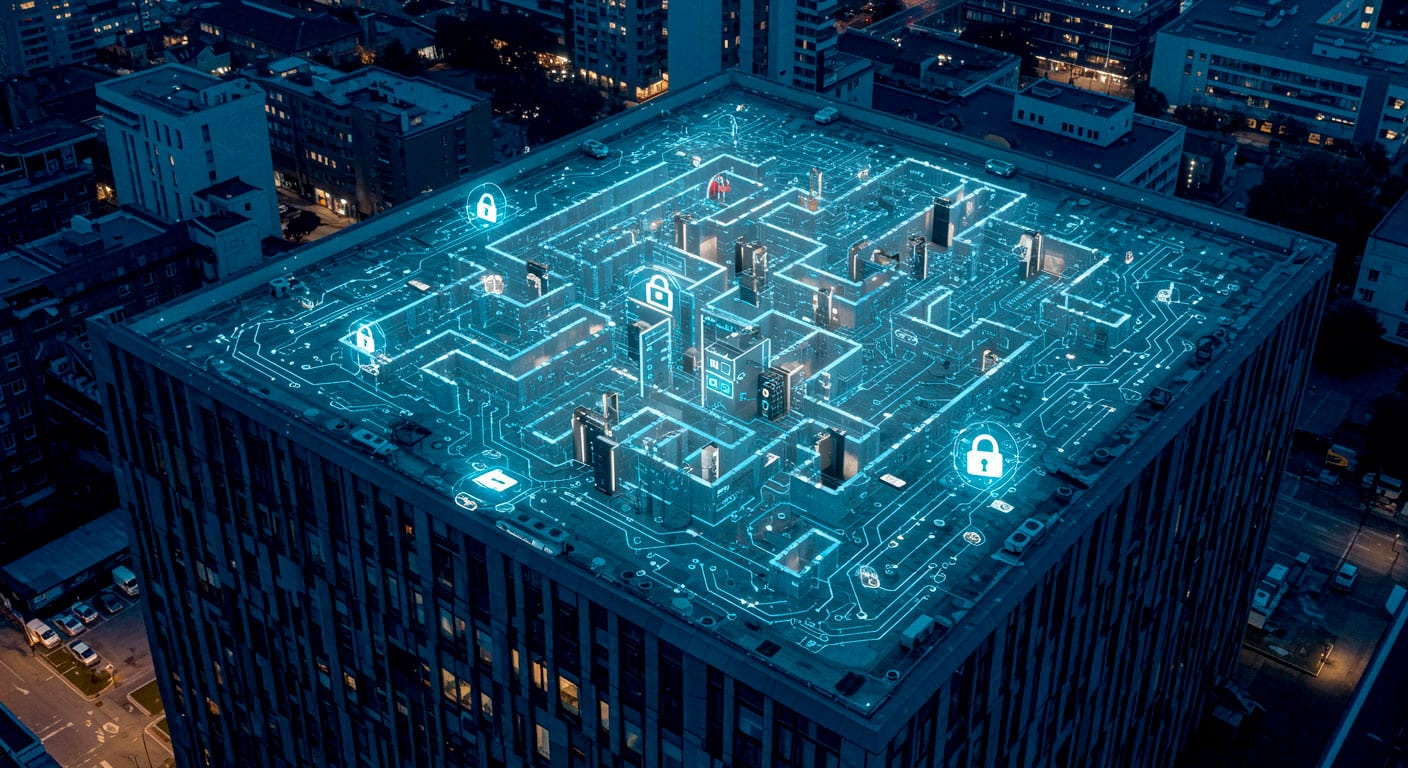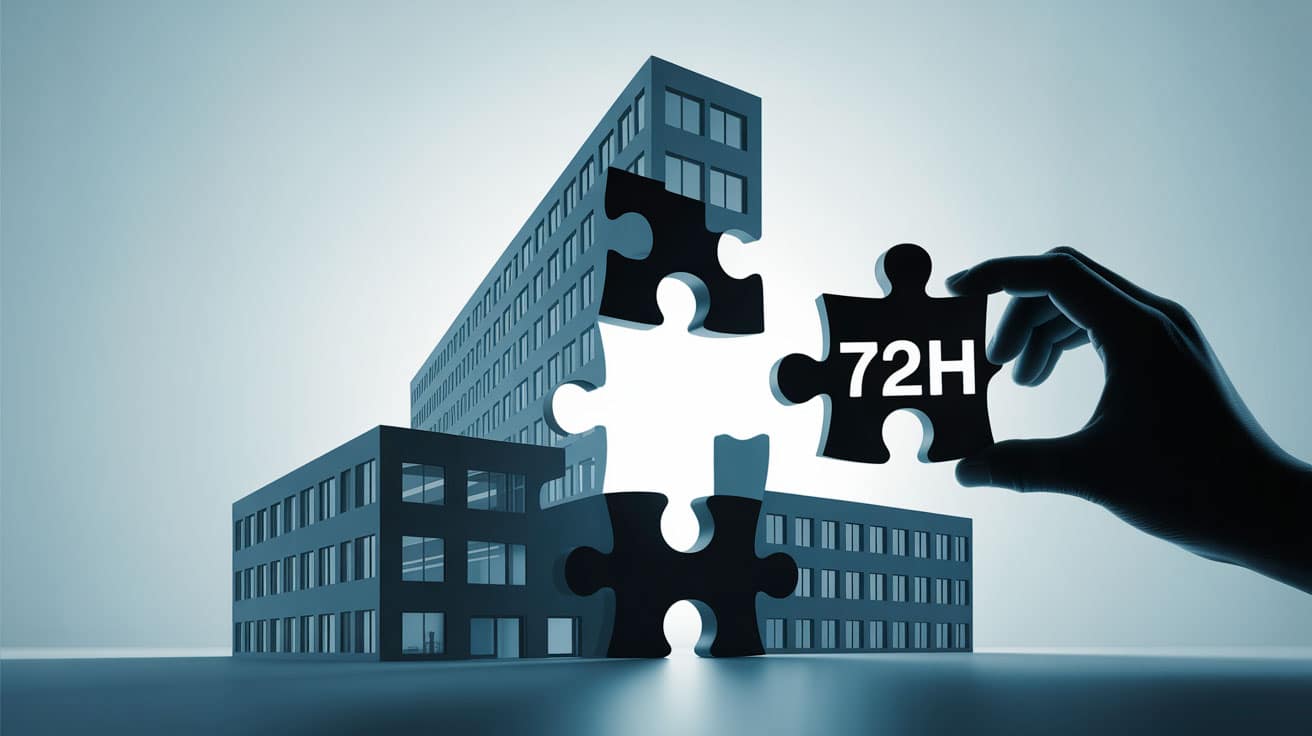Implementing an effective risk prevention strategy in physical security is not simply a matter of adopting advanced technologies or hiring security personnel.
This is a holistic and continuous approach involving risk analysis, staff training, constant monitoring and technology integration.
Let’s take a detailed look at the most effective practices to protect companies from physical threats.
1. Perform Regular Risk Assessments.
Risk assessment is the first and most important step in prevention. However, many companies simply do it on a one-time basis, without considering that risks can evolve over time.
What does this mean in practice?
- Vulnerability analysis:Examines critical areas of the company, such as entrances, storage areas, parking lots, and access points to sensitive data.
- Threat mapping:Identifies potential internal and external threats, from theft and vandalism to natural disasters or human error.
- Periodic updates:Repeat the assessment every 6-12 months or after structural or organizational changes, such as moving to a new location or acquiring new equipment.
Tip: Use an audit checklist or risk management software to simplify and standardize the process.
2. Investing in Advanced Technology
Technology is a key ally in risk prevention. It is not just about installing cameras, but adopting intelligent systems that work in synergy to anticipate threats.
Key technologies for prevention:
- Intelligent video surveillance:Cameras with artificial intelligence can recognize suspicious behavior or anomalies (such as people in unauthorized areas or unusual movements after closing time).
- Biometric access control:Biometric technologies (fingerprints, facial recognition) ensure that only authorized personnel can access certain areas.
- IoT sensors and smart alarms:Motion sensors, smoke and gas detectors, or tamper-resistant devices connected to a centralized network for immediate response.
- H24 remote monitoring:Surveillance systems can be monitored in real time by outside operators or through dedicated apps, ensuring immediate response even when no personnel are on site.
Tip: Integrate technologies into a single platform to facilitate management and monitoring.
3. Train the Staff
The most advanced technologies and detailed plans can fail if staff are not properly trained. Employees are the first line of defense against many threats, and it is critical that they know how to act in an emergency.
Key elements of staff training:
- Security Awareness:All employees should be made aware of security risks, even those not directly involved in operational management.
- Emergency procedures:Each team member should be familiar with evacuation protocols, how to report suspicious activity, and who to contact in case of an emergency.
- Specific training for key roles:Security officers and managers should receive advanced training on crisis management and coordination of response teams.
- Periodic simulations and drills:Hands-on exercises help test staff preparedness and identify any gaps in safety plans.
Tip: Hold periodic workshops and simulations to keep attention high and update staff skills.
4. Create a Detailed Emergency Plan
An emergency plan cannot be a generic, abstract document-it must be detailed, customized and easily accessible to all personnel.
What should an effective emergency plan include?
- Evacuation protocols:Clear directions on how to leave the building safely, with well-marked routes and external collection points.
- Emergency contacts:Up-to-date list of emergency phone numbers, including law enforcement, fire department, ambulance, and internal personnel.
- Assigned responsibilities:Identification of key roles during an emergency, such as evacuation managers or contact persons for communication with authorities.
- Crisis management:Procedures on how to deal with different types of incidents (theft, fire, insider threats) and how to ensure business continuity after the event.
???? Tip: Test the plan regularly with simulations and update it according to new needs or staff feedback.
5. Continuous Monitoring and Maintenance
Even the best security systems can fail without continuous monitoring and proper maintenance. It is critical to ensure that all technologies are working properly and that protocols are always up to date.
What does continuous monitoring and maintenance mean?
- Periodic equipment checks:Regularly check the operation of cameras, alarms, sensors, and access control systems.
- Software updates:Keep security software up-to-date to protect you from new vulnerabilities.
- Real-time monitoring:Implements a 24/7 surveillance system, with operators ready to intervene if an alarm or anomaly is detected.
- Verification of protocols:Checks that procedures are being followed correctly by staff and that there are no operational flaws.
Tip: Create a maintenance schedule and engage a vendor that offers real-time monitoring and intervention services.
7. Collaboration with Qualified Partners
Risk prevention is not a task that must be tackled alone. Collaborating with vendors and consultants who specialize in physical security can make a difference in effectiveness and innovation.
What to look for in a security partner?
- Industry experience:A provider with long experience knows the dynamics of different business environments and can offer tailored solutions.
- Integrated solutions:You prefer partners who can provide a complete service, from risk analysis to technology implementation and supervisory management.
- Continuous support:Ensure that the partner offers H24 monitoring and support, with the possibility of rapid intervention in case of emergency.
Tip: Choose a partner that offers clear and measurable SLAs (Service Level Agreements) to be assured of service quality.
Conclusion: Prevention is a Continuous Process
Risk prevention in physical security is not a one-time activity, but an ongoing process involving technologies, people, and strategies. Every company, regardless of size or industry, can benefit from a proactive approach that reduces vulnerabilities and ensures a safe environment for employees, customers, and company assets.
Investing in prevention means protecting the present and building a safer and more stable future. Don’t wait until it’s too late: security starts today.
Want to learn more about how to improve risk prevention in your company? Contact us for a free consultation and discover the solutions that best suit your needs.



